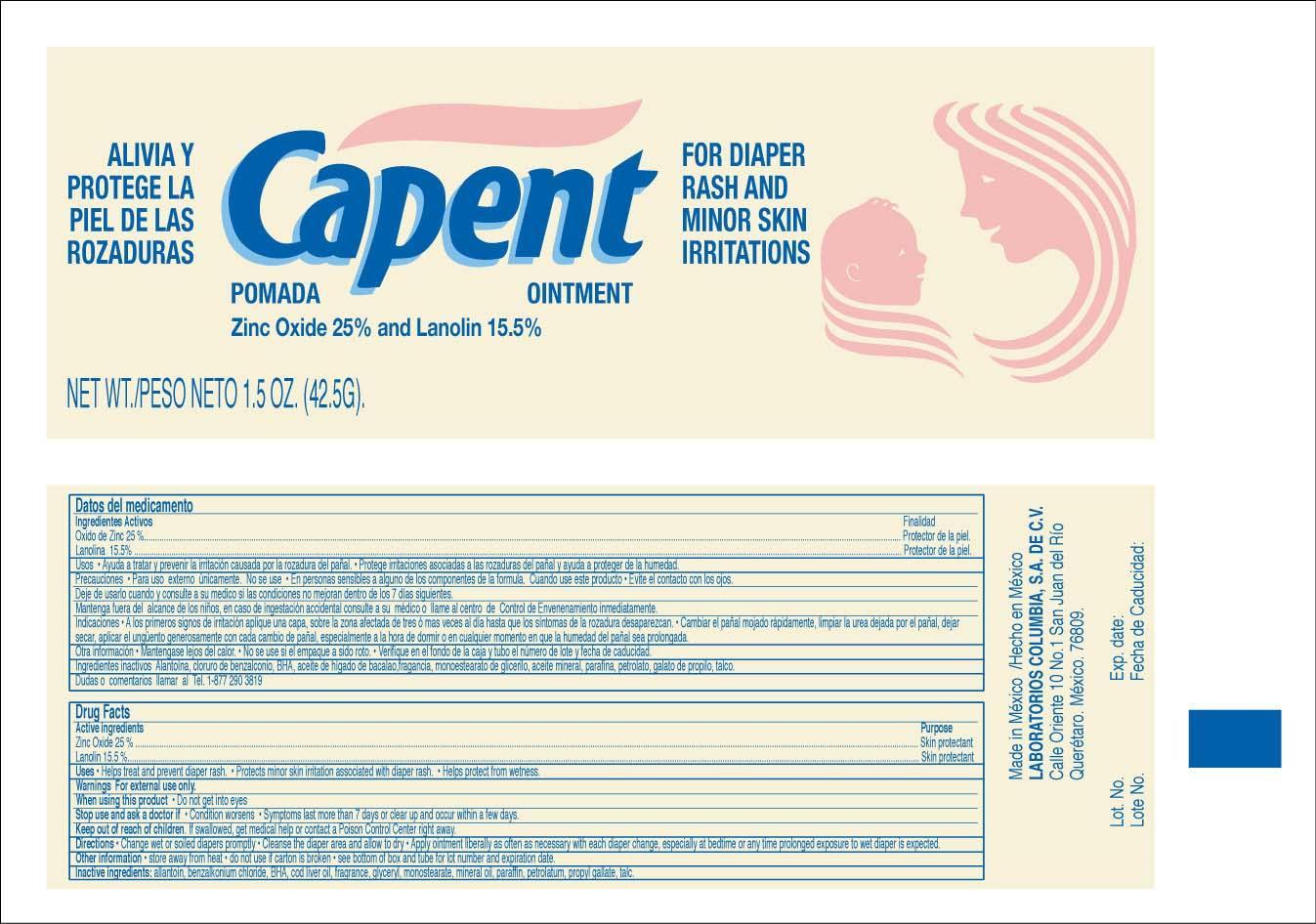Capent Diaper Rash | Zinc Oxide Lanolin Ointment while Breastfeeding

What is Capent Diaper Rash | Zinc Oxide Lanolin Ointment used for?
Brief: Skin protectant Skin protectant
Is using Capent Diaper Rash | Zinc Oxide Lanolin Ointment unsafe in breastfeeding? Can there be bad consequences for baby if I use it while breastfeeding?

Capent Diaper Rash | Zinc Oxide Lanolin Ointment Breastfeeding Analsys
Zinc oxide while Breastfeeding
SafeCAS Number: 1314-13-2
It is used topically as an astringent and skin protector, very often together with small amounts of Ferric Oxide to form Calamine (see specific info). It is a product compatible with breastfeeding according to WHO Essential Medicine’s List - 2002.It is also used in dental hygiene products and cosmetics. Widely used for skin protection of the diaper area in infants. Because of the small dose used and poor absorption into plasma of most topical dermatological preparations, excretion into breastmilk in significant amount appears to be unlikely. Do not apply on the breast to prevent infant ingestion; otherwise, wash it off thoroughly with water before the next breast feed.
Lanolin while Breastfeeding
SafeCAS Number: 8006-54-0
Avoid applying it on nipples; all lanolin is not the same: - Standard Lanolin: 12 -15% alcohol and 40 PPM pesticide residues. - Modified Lanolin: 6% alcohol and 3 PPM pesticide residues. Use for the nipples Ultrapure Medical Grade USP Modified Lanolin, alcohol and pesticides free, safe for use on even the most sensitive skin or where infant ingestion may occur.
Capent Diaper Rash | Zinc Oxide Lanolin Ointment Breastfeeding Analsys - 2
Lanolin while Breastfeeding
CAS Number: 8006-54-0
Lanolin is a yellow fat obtained from sheep's wool. It has traditionally been used topically to treat sore, cracked nipples during breastfeeding. Highly purified modified lanolin (Lansinoh) has the pesticide and detergent residues removed and the natural free alcohols reduced to below 1.5% to improve safety and reduce the allergic potential.[1] However, it should be avoided in patients with a known allergy to wool. Although lanolin appears to be effective for the prevention and treatment of nipple pain from breastfeeding,[2] studies, most of which used Lansinoh, have not found lanolin to be consistently different in efficacy from application of breastmilk, hydrogel dressings, peppermint gel, aloe vera or warm compresses.[3][4][5][6][7][8][9] A metaanalysis concluded that application of nothing or breastmilk may be superior to lanolin, but good studies are lacking.[10] One small nonblinded study found olive oil to be superior to lanolin for prevention of sore nipples,[11] and another small, single-blinded study found that lanolin application to painful nipples did not decrease nipple pain compared to usual care.[12] A study in women with nipple trauma and pain comparing application of lanolin after each feeding to application of breastmilk plus a nipple shell found that the breastmilk and shell were more effective than lanolin.[13] A randomized study comparing highly purified lanolin (Lansinoh) to expressed breastmilk in 180 mothers, found lanolin to be superior to breastmilk over a 7-day period in reducing pain and the nipple trauma score.[14]
I already used Capent Diaper Rash | Zinc Oxide Lanolin Ointment and meanwhile I breastfed my baby should I be concerned?
As usage of Capent Diaper Rash | Zinc Oxide Lanolin Ointment is mostly safe while breastfeeding hence there should not be any concern. In case of any change in behavior or health of your baby you should inform your health care provider about usage of Capent Diaper Rash | Zinc Oxide Lanolin Ointment else no further action is required.
My health care provider has asked me to use Capent Diaper Rash | Zinc Oxide Lanolin Ointment, what to do?
Definitely, Capent Diaper Rash | Zinc Oxide Lanolin Ointment is safe in lactation for baby. No wonder your doctor has recommended it.
If I am using Capent Diaper Rash | Zinc Oxide Lanolin Ointment, will my baby need extra monitoring?
No extra baby monitoring required while mother is using Capent Diaper Rash | Zinc Oxide Lanolin Ointment
Who can I talk to if I have questions about usage of Capent Diaper Rash | Zinc Oxide Lanolin Ointment in breastfeeding?
US
National Womens Health and Breastfeeding Helpline: 800-994-9662 (TDD 888-220-5446) 9 a.m. and 6 p.m. ET, Monday through Friday
UK
National Breastfeeding Helpline: 0300-100-0212 9.30am to 9.30pm, daily
Association of Breastfeeding Mothers: 0300-330-5453
La Leche League: 0345-120-2918
The Breastfeeding Network supporter line in Bengali and Sylheti: 0300-456-2421
National Childbirth Trust (NCT): 0300-330-0700
Australia
National Breastfeeding Helpline: 1800-686-268 24 hours a day, 7 days a week
Canada
Telehealth Ontario for breastfeeding: 1-866-797-0000 24 hours a day, 7 days a week
